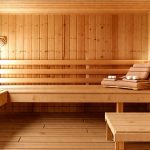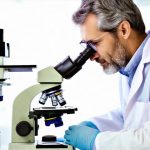The practice of sauna bathing has deep roots in many cultures, historically valued for its restorative and cleansing properties. Beyond simply inducing relaxation, emerging research suggests that regular sauna use can influence various physiological systems, including cardiovascular function, immune response, and potentially even hormonal balance. However, the benefits aren’t solely derived from the heat exposure itself; a crucial component often overlooked is the post-sauna cooldown period. This transition phase – moving from intense heat to a cooler environment – appears to play a significant role in optimizing the overall health impact of sauna bathing and may be particularly relevant when considering prostate health, although more research is needed to fully understand these connections.
The human body responds dynamically to temperature changes. During a sauna session, blood vessels dilate to dissipate heat, increasing circulation and causing profuse sweating. This process puts stress on the cardiovascular system but also flushes toxins and can promote relaxation. However, abruptly returning to room temperature without a thoughtful cooldown can hinder these benefits. A proper cooldown allows the body to gradually return to its baseline state, preventing rapid vasoconstriction (narrowing of blood vessels) which can lead to dizziness or even strain the heart. More importantly for prostate health considerations, the cooling phase appears to influence hormonal regulation and vascular tone in ways that may be beneficial over time, though this is still an area of ongoing investigation.
The Science Behind Post-Sauna Cooling & Vascular Health
The immediate physiological response to exiting a sauna involves a dramatic shift. Your body’s thermoregulatory system kicks into high gear as it attempts to regain homeostasis – the stable internal state necessary for optimal functioning. This isn’t just about temperature; blood pressure fluctuates, heart rate adjusts, and hormonal signals are sent throughout the body. A rapid return to cooler temperatures without allowing a gradual transition can disrupt this delicate balance. – Vasoconstriction occurs quickly, potentially leading to lightheadedness or even fainting in some individuals. – The abrupt change in blood flow can stress the cardiovascular system, negating some of the benefits gained during the sauna session itself.
Crucially, the post-sauna cooling period impacts vascular tone. This refers to the degree of constriction and dilation of blood vessels. Regular exposure to heat followed by controlled cooling may help improve endothelial function – the health of the inner lining of blood vessels. Healthy endothelium promotes better blood flow, reducing inflammation and contributing to overall cardiovascular well-being. Improved vascular health is significant for prostate regulation because a healthy circulatory system delivers essential nutrients and oxygen to the prostate gland while efficiently removing metabolic waste products. It’s theorized that consistent improvement in vascular function can support optimal prostate health over time, though it’s important to reiterate that this remains an area of active research. Maintaining proper hydration is key, so consider reviewing options for daily water portioning.
This process isn’t merely about preventing immediate discomfort; it’s about leveraging the physiological changes induced by sauna bathing for long-term benefits. A well-managed cooldown enhances the body’s adaptive response to thermal stress, potentially strengthening cardiovascular resilience and promoting improved circulation throughout the body – including to vital organs like the prostate.
Cooling Methods & Best Practices
Choosing the right cooling method is essential for maximizing the benefits of post-sauna recovery. There’s no one-size-fits-all approach; it depends on individual tolerance, environmental factors, and personal preference. However, here are some recommended techniques:
- Gradual Temperature Reduction: Avoid immediately stepping into a cold shower or air-conditioned room. Instead, transition through progressively cooler environments. This could involve spending a few minutes in a moderately cool room before moving to a colder space.
- Cool Water Immersion (Cautiously): Briefly immersing feet and legs in cool water can help constrict blood vessels in the lower extremities, preventing blood pooling and reducing strain on the heart. Caution: Avoid plunging your entire body into cold water immediately after sauna – this is generally not recommended.
- Air Cooling with Movement: Walking slowly or engaging in light activity while exposed to cooler air helps facilitate circulation and prevents dizziness. This allows for a more controlled vasoconstriction process.
The goal isn’t necessarily to get “cold” quickly, but rather to facilitate a gradual return to normal body temperature. Listen to your body; if you feel dizzy or uncomfortable, immediately sit down and rest. Hydration is also paramount – replenish fluids lost during the sauna session with water or electrolyte-rich beverages.
Hydration & Electrolyte Balance Post-Sauna
Sweating profusely during a sauna session leads to significant fluid loss and depletion of electrolytes like sodium, potassium, and magnesium. Dehydration can exacerbate dizziness, fatigue, and even compromise cardiovascular function. Therefore, rehydrating immediately after the cooldown is crucial. Don’t wait until you feel thirsty; start replenishing fluids as soon as you exit the sauna.
- Water should be your primary source of hydration, but consider adding electrolytes to restore balance. Coconut water, electrolyte tablets, or a pinch of sea salt in water can all be helpful options.
- Avoid sugary drinks or excessive caffeine, as these can further dehydrate the body.
- Pay attention to individual needs: The amount of fluid and electrolytes required will vary depending on factors like sauna duration, intensity, and personal sweat rate.
Electrolyte imbalances can affect muscle function, nerve transmission, and overall cellular health. Maintaining proper electrolyte balance supports healthy prostate function by ensuring adequate hydration and nutrient delivery to the gland. While direct research linking post-sauna rehydration specifically to prostate health is limited, maintaining optimal hydration is universally recognized as vital for overall well-being and may indirectly support prostate health. A focus on balancing daily fluids can be a proactive step.
The Role of Hormonal Regulation & Prostate Health
The connection between sauna bathing, post-sauna cooling, and hormonal regulation – particularly relating to testosterone and cortisol – is an emerging area of interest. Some studies suggest that regular sauna use can transiently increase testosterone levels while potentially reducing cortisol (the stress hormone). However, these effects are often short-lived and heavily influenced by the cooldown period.
A rapid, uncontrolled cooling phase may negate some of the hormonal benefits derived from the heat exposure. A gradual cooldown allows the body to maintain a more balanced hormonal state, potentially promoting optimal testosterone levels while mitigating excessive cortisol release. Healthy testosterone levels are important for overall male health and have been linked to prostate function, although complex and indirect. Understanding PSA testing is also crucial for proactive monitoring.
It’s vital to emphasize that sauna bathing should not be viewed as a substitute for medical treatment or preventative care regarding prostate health. Regular checkups with a healthcare professional remain the cornerstone of proactive prostate management. However, incorporating mindful post-sauna cooling practices alongside a healthy lifestyle could potentially contribute to overall well-being and may play a supportive role in maintaining optimal prostate function. It is essential to consult with your doctor before starting any new health regimen.





















